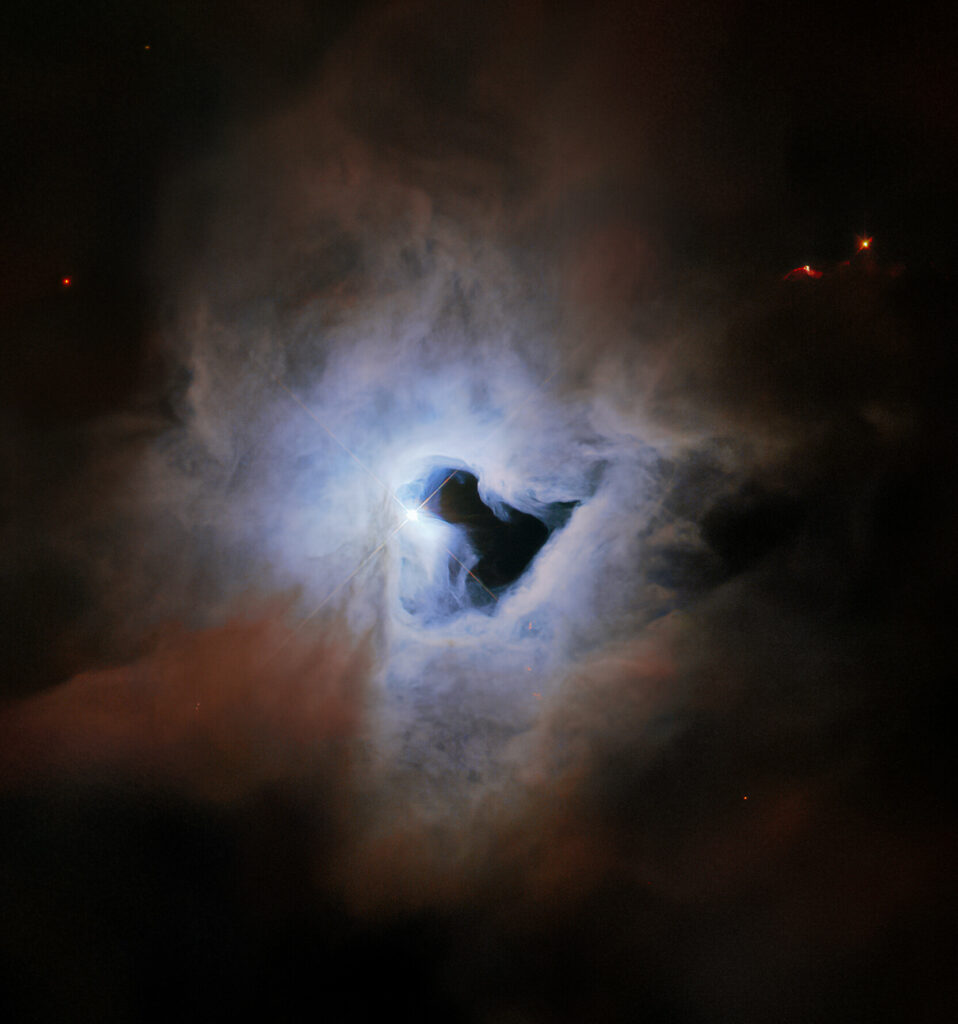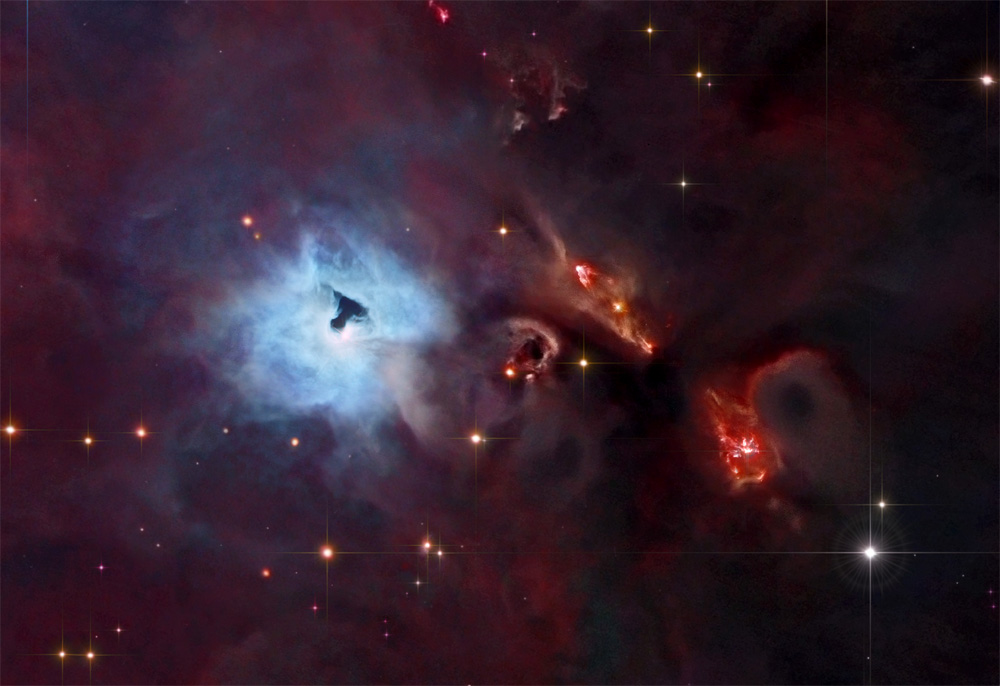The Hubble mission support team has published a new bizarre image of a deep space object. This time, the space observatory photographed the NGC 1999 nebula, which looks like a giant keyhole in the sky.

The “keyhole” photographed by Hubble is located at a distance of 1,350 light-years from Earth. It is part of the larger Orion nebula, the closest region of active star formation to Earth. It can be seen in the Earth’s sky with the naked eye.
NGC 1999 is classified as a reflective nebula. This means that it does not shine with its own light, but for the light of the “backlight” from an external source. It is the V380 star system, which can be seen in the center of the image.
V380 consists of at least three stars. In the center of the system is a close pair of luminaries, which total mass exceeds the mass of the Sun by almost three times. A newborn star orbits them, which mass exceeds the solar one by 1.6 times. Another object is also recorded in the system, which can be a red or brown dwarf.
Because the V380 is very young, it is still surrounded by remnants of material left over from its formation. Its characteristic bluish hue is explained by the fact that dust particles mainly reflect blue light.

But the most remarkable part of the nebula is still not V380, but an unusual “hole” in the center, resembling a huge black keyhole. Previously, it was thought that this is an extremely dense cloud of dust and gas that completely blocks light. Under the influence of gravity, such clouds gradually shrink and over time new stars begin to form in them.
However, during more detailed observations, astronomers have not found any traces of such processes. This suggests that this area is really empty and does not contain any substance. The exact causes of this phenomenon are still unknown. According to one version, it was formed as a result of the impact of jets of newborn stars and their powerful radiation.
Recall that recently the James Webb Telescope took a new photo of the famous Pillars of Creation.
According to https://esahubble.org
Follow us on Twitter to get the most interesting space news in time
https://twitter.com/ust_magazine
